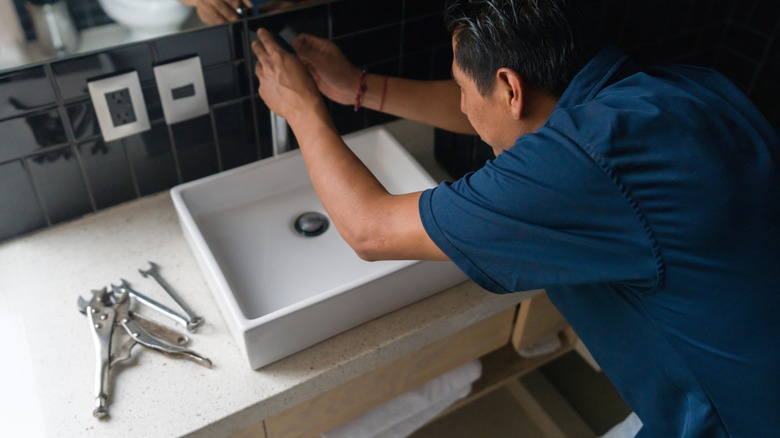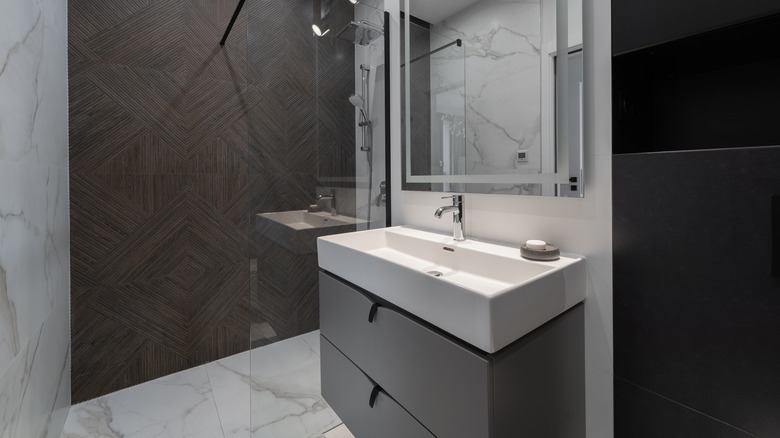Installing A Bathroom Vanity Yourself Is Easy With These Must-Know Tips
Installing a new bathroom vanity is an excellent way to update your old bathroom and increase your home's resale value. But unless you're an experienced DIYer, the task may prove more challenging than it seems. That's because you're dealing with several vital home systems and components that are in an unknown state of repair, and can easily cause a huge mess if mishandled. For one, there's the plumbing. If you're inexperienced in plumbing projects and attempt to disassemble an old system, you have a good chance of flooding the place. Likewise, trying to detach the old vanity from the wall can harm the interior, and conversely, improperly affixing the new unit could be outright dangerous.
To help you anticipate and prevent mistakes everyone seems to make when renovating a bathroom, we've put together a few tips for a hassle-free DIY vanity installation. Let's start with some key things you should consider while preparing for the job. The first tip is a no-brainer, but one that can turn into a pricey mishap if you neglect it — turn the water off at the shut-off valve. Likewise, find a container to place under the P-trap beneath the sink; you don't want any leftover water in the pipes to leak out when you disconnect the joints. Another vital pre-installation tip is to slice through the silicone that seals the interface between the old vanity and the wall. If you don't, you might damage the drywall while trying to pry the old vanity away.
Key tips for a safe, mess-free bathroom vanity installation
If your bathroom desperately needs an upgrade, you may be tempted to dive right into installing the unit after completing the preparation steps above. However, there are a few crucial tips to follow during the procedure if you want the process to go off smoothly. For one, be sure to remove the doors and drawers from the new vanity while you're handling it. If you don't, they may swing or slide open and hit adjacent walls or fixtures, causing damage to the latter or to themselves, or even injuring you. Vitally, take into account the plumbing pipework's tendency to expand and contract once the vanity enters service. To accommodate these size variations, the hole cutouts you make in the vanity should be a tad larger than the pipes running through them.
Once the unit is in place, use a level to make sure it's horizontally aligned properly. If the counter surface is not level, tweak the alignment by turning the unit's adjustable feet. In the absence of the latter, drive shims under the vanity's feet to make it level.
This may seem obvious, but don't neglect attaching the vanity to the wall behind it or the floor it's standing on. You may feel like it's safe to leave freestanding, but it's not. A vanity counter that's not properly secured could easily tip over and hurt you or a loved one. Likewise, you can damage the pipework running to the faucet if you inadvertently move the unit while using it. Know that securing the vanity to the drywall is not a safe option unless you use appropriate drywall anchors. Alternatively, you can screw the unit to the studs beyond the drywall.

